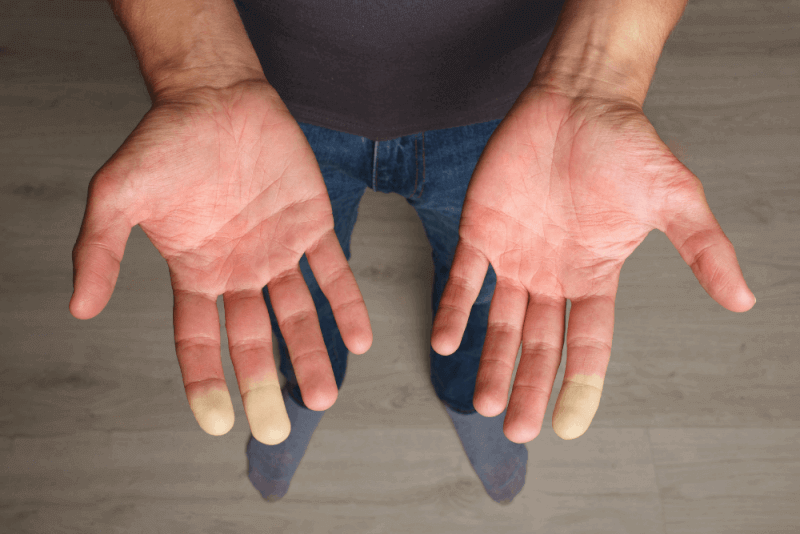What is Rheumatism?
Rheumatism affects joints, tendons, ligaments, bones, and muscles and comes in many different forms. Rheumatic diseases that affect the joints are generally referred to as arthritis. In some cases, these diseases are also called skeletal system diseases.
The field of medicine that examines this condition is called rheumatology. If a doctor suspects a rheumatic disease, they will refer their patients to a rheumatologist. Rheumatism, a chronic disease, can sometimes affect internal organs.
Rheumatism is roughly divided into inflammatory and non-inflammatory types. Inflammatory rheumatism is a chronic disease that causes damage and various problems in various tissues, primarily joint tissues, due to immune mechanisms. The inflammation it causes in the joints is characterized by pain and restricted joint movements.
Rheumatism Diagnosis Methods
To diagnose rheumatism, patients' complaints are first examined. In addition, some imaging tests are used to make a definitive diagnosis. These imaging methods include:
- X-ray
- Magnetic resonance imaging
- Computed tomography scan
- Joint and bone ultrasound
In addition to imaging methods, some tests are used to determine the type of rheumatism. These tests include:
- ESR
- CRP
- Joint fluid and tissue sample
Causes of Rheumatism
Rheumatism occurs when wear and tear result from damage to the tissues where rheumatism is seen. The reason it can be seen at almost any age is due to genetic transmission, gender, obesity, environmental factors, and age.
The factors that cause rheumatism vary depending on the type of rheumatism. Inflammatory rheumatism is caused by an error in the immune system, which mistakenly attacks healthy tissues. Non-inflammatory rheumatism is usually seen as genetically transmitted. Additionally, factors like gender, weight, and age increase the likelihood of occurrence. Common causes of rheumatism include:
- Intense physical activity
- Trauma and injuries
- Metabolic problems
- Lifestyle
- Wear and tear of joints and tissues
- Stress
Symptoms of Rheumatism
The symptoms seen in patients vary depending on the type of rheumatism. Common symptoms include:
- Pain in multiple joints
- Redness and swelling in affected joints
- Joint stiffness
- Pain especially in ankles, knees, and elbows
- Chest pain
- Shortness of breath
- Hair loss
- Lower back pain radiating to the spine
- Difficulty moving
- Sensitivity to sunlight
- Loss of appetite
- Fever
- Weight loss
- Chronic fatigue
- Stiffness in joints, especially in the mornings
- Low energy
- Pain increasing while resting
- Pain increasing when standing up
- Kidney function impairment
- Rashes
- Eye irritation and burning
- Changes in toenails
- Dry mouth
- Node formation
Rheumatism Treatment Methods
Although rheumatism is not a completely curable disease, recent advancements in this field have significantly helped to control many uncertainties. Continuous communication and cooperation between patients and healthcare teams are essential in the treatment of rheumatism.
Rheumatism, a chronic disease that lasts a lifetime, has flare-up periods. The main goal of treatment is to reduce or eliminate complaints during these periods.
Rheumatism Exercises
Rheumatism exercises help reduce stiffness in the joints while strengthening the muscles and reducing pain. Rheumatism exercises vary depending on the affected area, but there are common points to consider in all types. The first is to avoid sports and exercises with a high risk of injury, such as tennis or football.
Instead, exercises like aerobics, which involve the full range of joint motion, should be preferred. Three types of exercises are recommended for rheumatism patients: stretching exercises, resistance training, and exercises that work all joint angles. Resistance training includes isometric exercises.
In isometric exercises, a fixed resistance is pushed or pulled. Stretching exercises aim to increase the flexibility of the joints without putting pressure on them. These exercises not only increase joint flexibility but also strengthen them.
Sports that improve flexibility include swimming, cycling, and walking. Daily exercises not only reduce stiffness and pain but also significantly improve patients' quality of life.
Rheumatism Surgery
Surgical options are the last resort in rheumatism treatment. They are applied when the patient's joints are severely damaged. Surgical procedures for rheumatism patients include joint arthroscopy or joint replacement.
Side Effects of Rheumatism Surgery
Joint replacement surgeries performed due to joint damage from rheumatism carry some risks. These risks include:
- Blood clotting
- Loosening of the prosthesis
- Failure of the prosthesis to fuse with the bone
- Movement restriction
- Infection
Benefits of Rheumatism Surgery
If the treatment is successful after rheumatism surgeries, patients' pain completely disappears. In addition, patients can continue their daily lives as they regain joint mobility.
Life After Rheumatism Surgery
Patients need to be carefully monitored after prosthetic surgeries. After the recovery process is completed and if no complications are observed, patients can almost resume their lives as before. However, there are some points they need to pay attention to:
- Exercises and physical therapy should not be neglected after surgery.
- The usage period of prostheses should be known, and excessive load should be avoided to prevent them from loosening or coming off.
- Prostheses should be regularly checked.
- To extend the lifespan of prostheses, regular maintenance is important. Regular cleaning and maintenance reduce the risk of infection and increase the lifespan of the prosthesis.
The Healing Process of Rheumatism Disease
The healing process after rheumatism surgeries varies depending on the patient's age, general health status, and post-surgery treatment plan. The general expected process after rheumatism surgeries is as follows:
- The length of hospital stay after surgery varies between one and three days.
- Various pain relievers and medications may be needed after surgery.
- Swelling and pain may be observed in the operated area for the first two weeks after surgery.
- Patients need to attend physical therapy sessions lasting between two and six weeks after surgery.
- It is important for patients to gradually return to their daily lives. This period varies between three and six months.
What Should Rheumatism Patients Pay Attention To?
To prevent the symptoms from worsening and the joints from further damage, rheumatism patients should pay attention to the following points:
- Maintaining a healthy weight
- Quitting the use of tobacco and tobacco products
- Paying attention to dental health
- Regular exercise
- Avoiding alcohol consumption
- Avoiding the use of high-heeled shoes
- Managing stress
Risk Factors of Rheumatism Disease
Rheumatism affects not only the joints but also the internal organs. There are many different types of rheumatism, and the complications it causes vary. Complications that can occur with rheumatism include:
- Heart attack
- Stroke
- Heart failure
- Pulmonary fibrosis
- Pulmonary hypertension
- Kidney failure
- Lymphoma
- Leukemia
Nutrition for Rheumatism Patients
Rheumatism patients are generally recommended to adopt a Mediterranean diet. In addition, foods that can increase symptoms, such as meat, alcohol, gluten, and dairy, should be identified. It is important to eliminate foods that exacerbate symptoms using the elimination method.
Rheumatism patients should generally avoid foods that increase inflammation. These foods include carbonated drinks, fried foods, animal fats, refined carbohydrates, and processed meats.
Instead, a diet rich in vegetables and fruits should be adopted. Additionally, sufficient consumption of lean meats, especially fish, is recommended. Nuts, which contain healthy fats, should also be consumed in optimal amounts.








